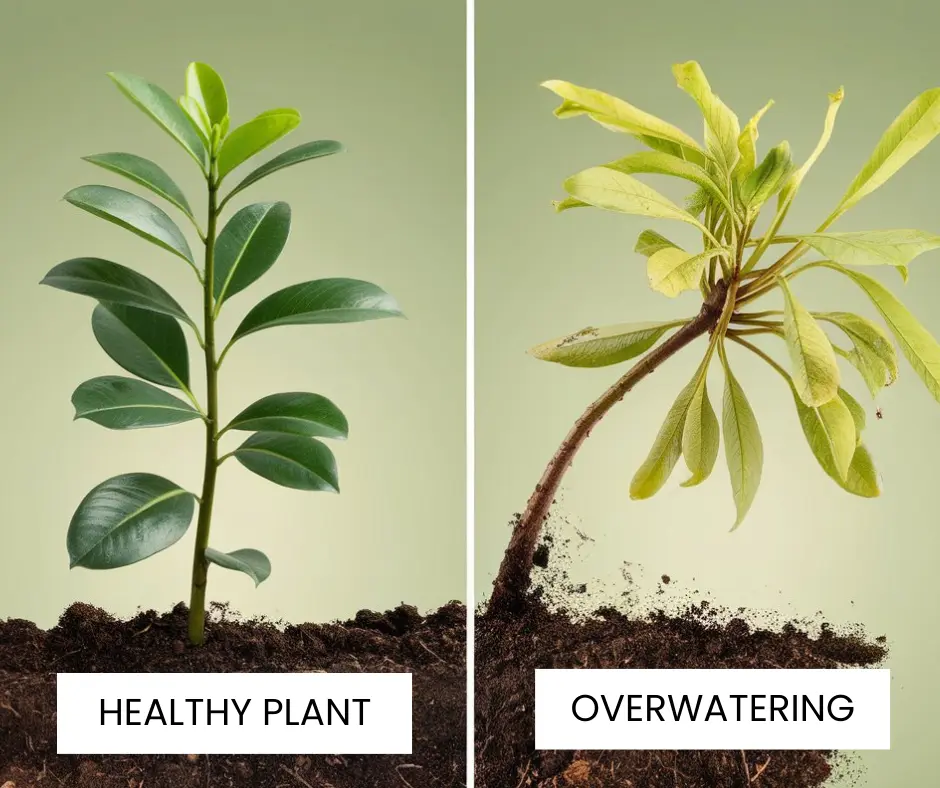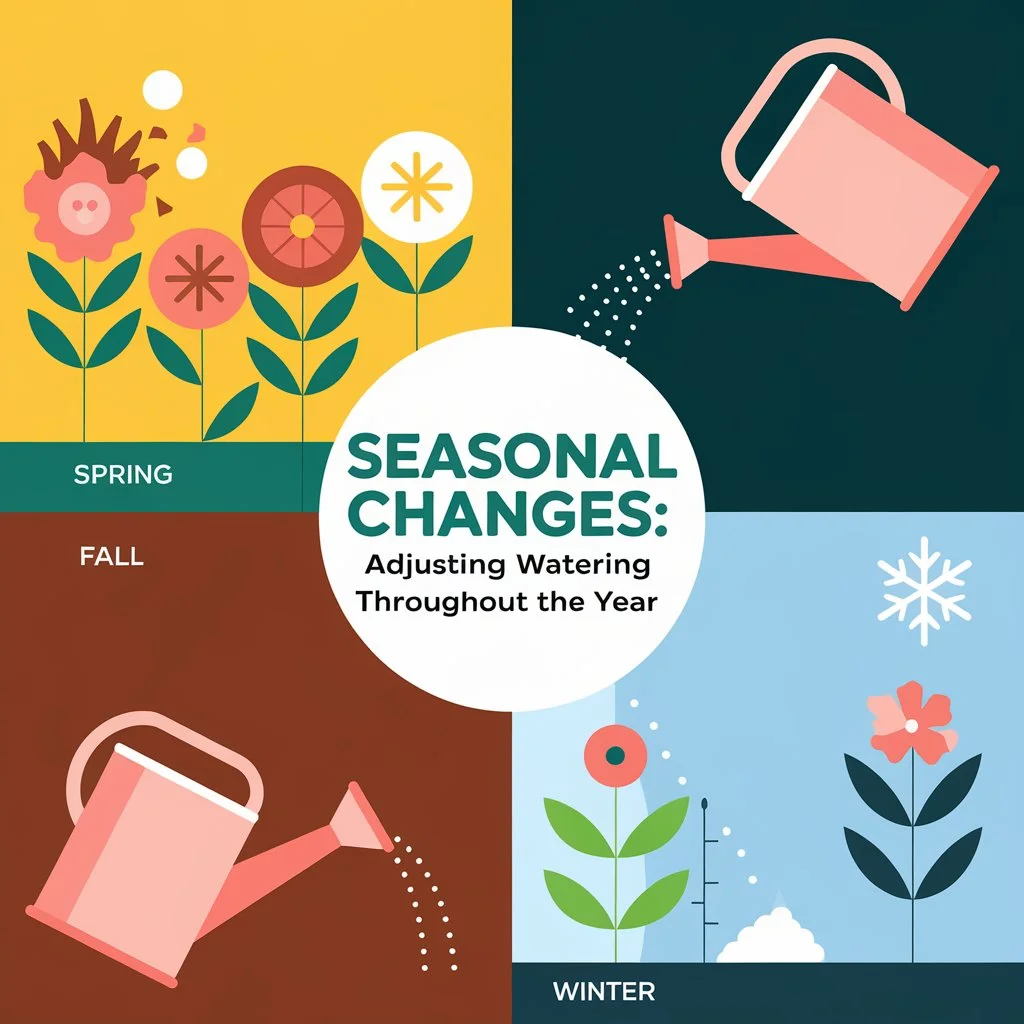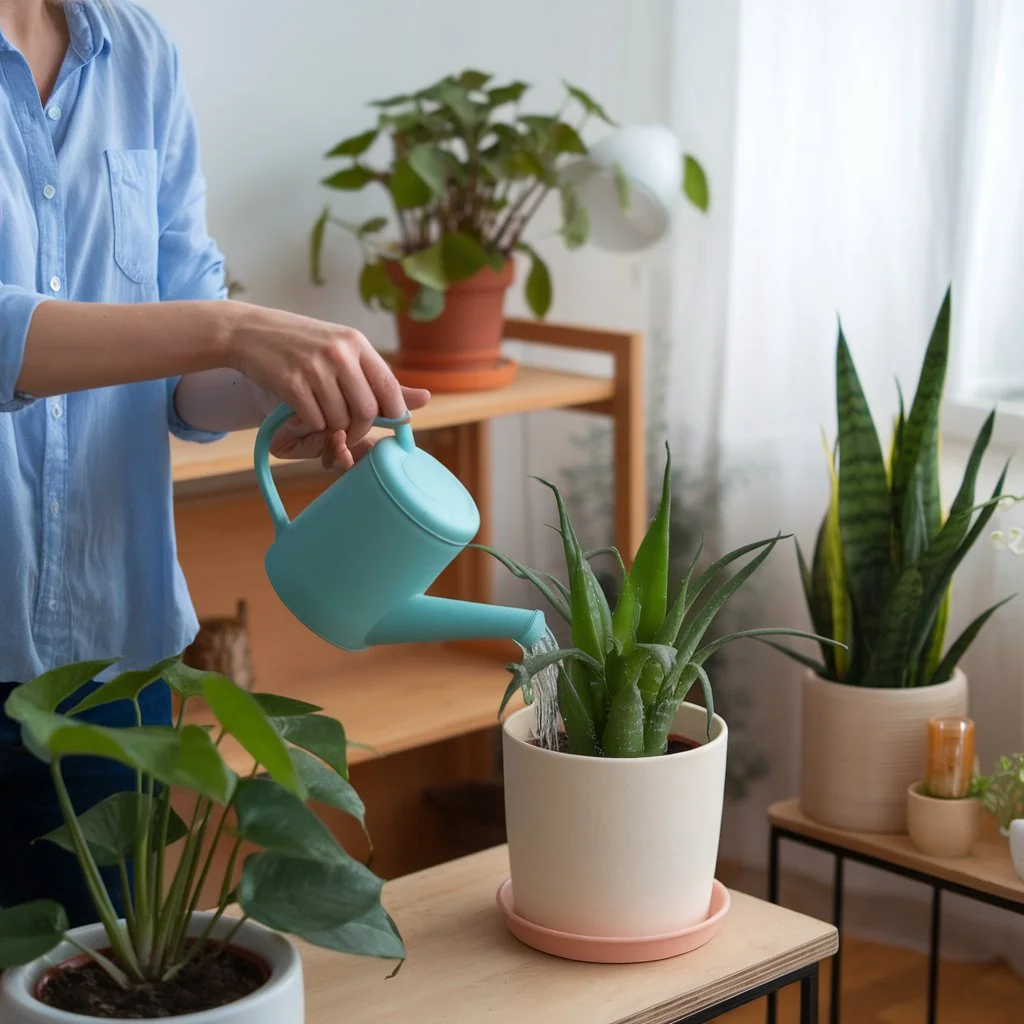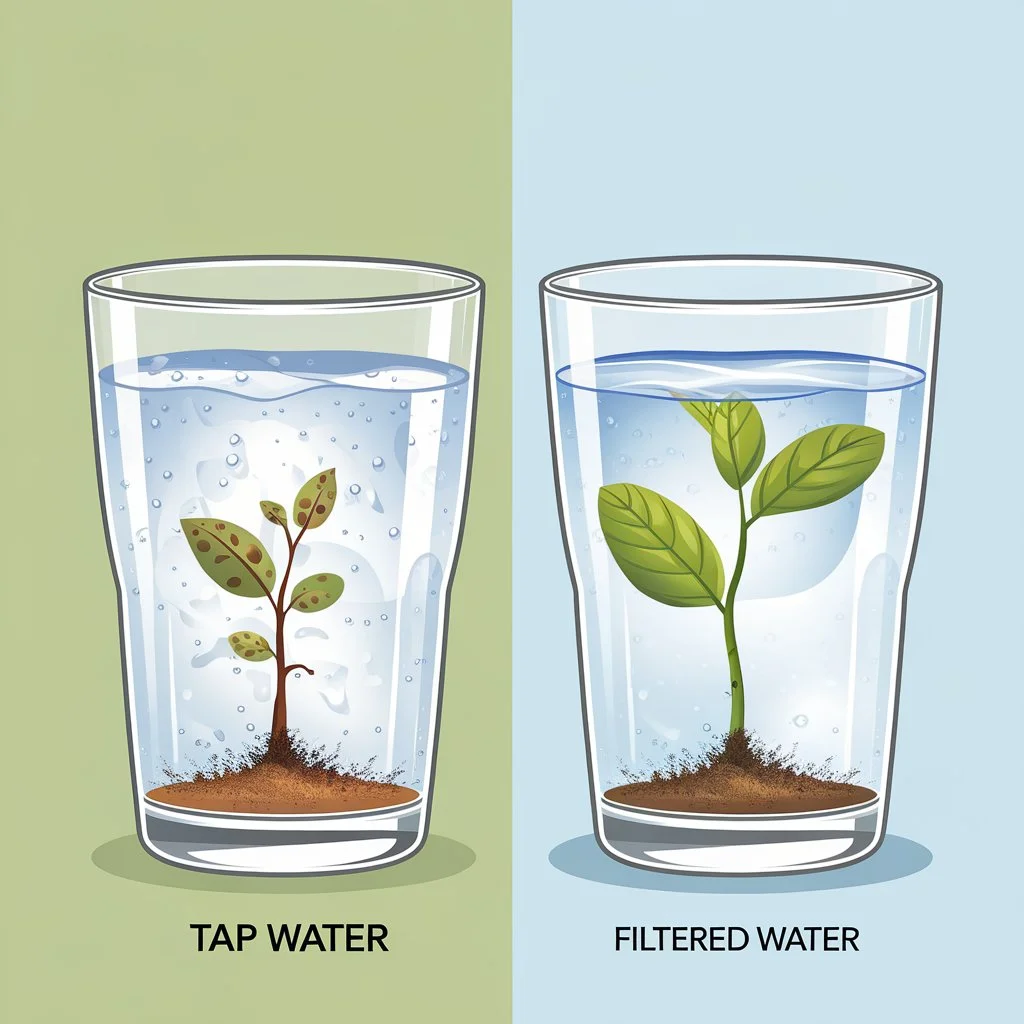The Ultimate 7-Step Guide to Master Indoor Plant Watering

Lush, thriving greenery doesn’t happen by chance—it’s all about Indoor Plant Watering done right. Overwatering drowns roots. Underwatering starves them. Finding the perfect balance? That’s where the magic happens. Imagine your plants bursting with vitality, leaves shimmering with health. This Ultimate 7-Step Guide unravels the secrets to effortless, foolproof Indoor Plant Watering. Ready to transform your plant care routine? Let’s dive in.
Table of Contents
Why Indoor Plants Struggle Without Proper Watering?
Plants are resilient, but without the right amount of water, their growth and overall health deteriorate. Overwatering suffocates the roots, leading to root rot, while underwatering causes dehydration and stunted growth. Finding the right balance is crucial to their survival.
Common Watering Mistakes That Can Kill Your Plants
- Overwatering: Leads to root rot and fungal diseases.
- Underwatering: Causes dry, crispy leaves and slow growth.
- Inconsistent Watering: Weakens plants, making them more susceptible to pests.
- Using the Wrong Water Type: Some tap water contains chemicals that harm plant roots.
- Ignoring Drainage Needs: Traps excess water, creating a breeding ground for mold and bacteria.
Signs of Overwatering vs. Underwatering
| Issue | Signs | Solution |
|---|---|---|
| Overwatering | Yellowing leaves, mushy stems, moldy soil | Let soil dry, improve drainage |
| Underwatering | Dry, crispy leaves, droopy stems | Increase watering frequency |
Watering Frequency Guide for Indoor Plants
| Plant Type | Watering Frequency | Notes |
|---|---|---|
| Succulents & Cacti | Every 2-3 weeks | Let soil dry completely |
| Ferns & Tropical | Every 3-5 days | Keep soil slightly moist |
| Snake Plant | Every 10-14 days | Prefers drier soil |
| Pothos & Philodendron | Once a week | Let top inch dry out |
| Peace Lily | Every 3-5 days | Wilts when thirsty |
| Orchids | Every 7-10 days | Use room-temperature water |
How This 7-Step Guide Will Transform Your Plant Care?
Mastering indoor plant watering means healthier, lusher plants, reduced risk of disease, and a more enjoyable plant parenting experience. Let’s dive into the essentials.
The Role of Plant Type in Watering Frequency
Not all plants require the same amount of water.
- Tropical plants (e.g., Monstera, Philodendron) love consistent moisture.
- Succulents and cacti (e.g., Aloe Vera, Snake Plant) thrive with minimal watering.
- Ferns require high humidity and frequent watering.
- Flowering plants need more hydration during blooming periods
How Light and Humidity Affect Watering Needs
- Bright, direct light causes soil to dry faster, requiring more frequent watering.
- Low light environments slow down water absorption.
- High humidity reduces water loss, meaning less watering.
- Dry indoor air (especially from heaters or ACs) increases plant water needs.
Seasonal Changes: Adjusting Watering Throughout the Year
- Spring & Summer: Plants are in active growth mode; water more frequently.
- Fall: Gradually reduce watering as plants enter dormancy.
- Winter: Most plants require less water due to slower growth
Rainwater is naturally soft and free from additives, making it the best option for most plants. Distilled water is another great choice, especially for delicate species like orchids.
Understanding Water Temperature and Its Impact
- Cold water shocks roots and slows plant growth.
- Lukewarm water is ideal for gentle hydration.
- Hot water can burn roots and damage plant cells.
Step 1: Know Your Plant’s Thirst Level
Identifying Plants That Love Moist Soil vs. Dry Soil
- Moist soil lovers: Ferns, Calatheas, Peace Lilies.
- Drought-tolerant plants: Cacti, ZZ plants, Ponytail Palms.
Signs Your Plant Needs Water (Or a Break from It)
- Needs water: Wilting, dry soil, brown leaf tips.
- Overwatered: Yellow leaves, soggy soil, mold growth.
Use our Indoor Plant Watering Calculator to determine the right watering schedule for your specific plants.
Step 2: Use the Right Pot and Soil Combination
Why Drainage Is the Secret to Healthy Roots?
Well-draining pots prevent excess water buildup, reducing root rot risks.
Choosing the Best Soil for Water Retention and Drainage
- Succulents & cacti: Fast-draining sandy soil.
- Tropical plants: Peat-based soil with added perlite.
- General houseplants: Loamy, well-aerated mix.
Step 3: Master the Finger Test and Other Watering Methods
How to Check Soil Moisture Like a Pro
- Insert a finger two inches into the soil. If dry, water.
- Use a wooden skewer – if it comes out dry, it’s time to water.
Using Moisture Meters: Are They Worth It?
Moisture meters provide an accurate reading of soil hydration, ideal for plant beginners.
Step 4: Timing Is Everything – When to Water
The Best Time of Day to Water Indoor Plants
Morning is best, allowing plants to absorb moisture before the temperature rises.
How to Create a Consistent Watering Schedule
Set reminders and track plant watering using our Indoor Plant Watering Calculator.
Step 5: The Right Way to Water – Slow and Steady Wins
Why Dumping Water Too Fast Can Harm Your Plant
Rapid watering floods soil, preventing absorption.
The Benefits of Bottom Watering vs. Top Watering Bottom watering encourages deeper root growth.
Step 6: Don’t Drown Your Plants – Drainage 101
How to Fix a Soggy Plant and Prevent Root Rot
- Remove excess water from the saucer.
- Improve airflow around the pot.
The Importance of Emptying Saucers and Drip Trays
Never let plants sit in standing water—it suffocates roots.
Final Tips for Keeping Your Greenery Thriving
- Observe your plants: They’ll show signs when something is off.
- Be consistent: Stick to a regular watering schedule.
- Use the right tools: Moisture meters and our Indoor Plant Watering Calculator can help perfect your routine.
By mastering indoor plant watering, you create a thriving, lush indoor jungle that stays vibrant year-round!
Best Watering Methods for Indoor Plants
| Watering Method | Best For | How to Use |
|---|---|---|
| Top Watering | Most plants | Pour slowly until drainage occurs |
| Bottom Watering | Plants prone to overwatering | Let pot sit in water for 10-15 min |
| Misting | Tropical plants, ferns | Increases humidity, not for hydration |
| Self-Watering Pots | Moisture-loving plants | Keeps soil consistently damp |
| Wick System | Vacations & low-maintenance care | Uses a cotton wick from a water source |
Choosing the Right Water for Your Plants
Tap Water vs. Filtered Water: What’s Best?
Tap water often contains chlorine, fluoride, and other minerals that may harm sensitive plants. Using filtered water or leaving tap water out overnight can help reduce harmful chemicals.
The Benefits of Rainwater and Distilled Water
Rainwater is naturally soft and free from additives, making it the best option for most plants. Distilled water is another great choice, especially for delicate species like orchids.
Understanding Water Temperature and Its Impact
- Cold water shocks roots and slows plant growth.
- Lukewarm water is ideal for gentle hydration.
- Hot water can burn roots and damage plant cells.
How often should indoor plants be watered?
It depends on the plant type, pot size, humidity, and light levels. Most indoor plants do well with watering once a week, but some (like succulents) need less frequent watering, while tropical plants may need more. Use the finger test—if the top inch of soil is dry, it’s time to water.
How to keep indoor plants watered while on vacation?
Try these simple methods:
- Self-watering pots for consistent moisture.
- Water wicking system using a cotton string from a water container to the soil.
- Plastic bottle drip irrigation by inserting a water-filled bottle upside down into the soil.
- Grouping plants together to create a humidity-friendly microclimate.
| Days Away | Watering Solution | How to Set Up |
|---|---|---|
| 2-3 days | Water thoroughly before leaving | No extra setup needed |
| 4-7 days | Water wicking system | Cotton string from water source to soil |
| 1-2 weeks | Self-watering pots | Water reservoir under the plant |
| 2+ weeks | Plastic bottle drip irrigation | Insert upside-down water bottle in soil |
Are self-watering pots good for indoor plants?
Yes, they are great for plants that like consistent moisture, such as ferns and peace lilies. However, they may not be ideal for succulents or cacti, which prefer drying out between waterings.
How much water to use when watering indoor plants?
A general rule is to water until excess water drains from the bottom of the pot. Small plants typically need a few ounces, while larger ones may need a cup or more. Avoid overwatering by checking soil moisture before watering again.
Why do plants need water?
Water is essential for transporting nutrients, maintaining cell structure, and enabling photosynthesis—the process that helps plants make food. Without adequate water, plants wilt, growth slows, and they may eventually die.
How to water plants while away?
- DIY watering systems like a water wick or plastic bottle drip method.
- Pebble trays with water to maintain humidity.
- Ask a friend or neighbor to check in and water as needed.
Can you water plants at night?
It’s not ideal, as water sits in the soil longer and increases the risk of fungal growth and root rot. The best time to water is early morning when plants can absorb moisture before temperatures rise.
Conclusion
Mastering indoor plant watering isn’t just about pouring water into a pot—it’s about understanding your plant’s unique needs, the environment it thrives in, and the right techniques to keep it healthy. By following these 7 essential steps, you can ensure your plants get just the right amount of hydration without the risks of overwatering or underwatering.
From choosing the right water and soil to using smart watering techniques like bottom watering, self-watering pots, and moisture meters, you now have a complete roadmap to keep your indoor plants lush, vibrant, and thriving.
Consistency is key—adjust your watering routine based on the seasons, humidity, and plant type. Observe your plant’s signals, use tools like our Indoor Plant Watering Calculator, and make small changes when needed.
With these expert-backed strategies, you’ll not only keep your plants alive but help them flourish year-round. A well-watered plant is a happy plant, and with the right care, your indoor garden will reward you with beauty, fresh air, and a touch of nature inside your home. 🌿✨



